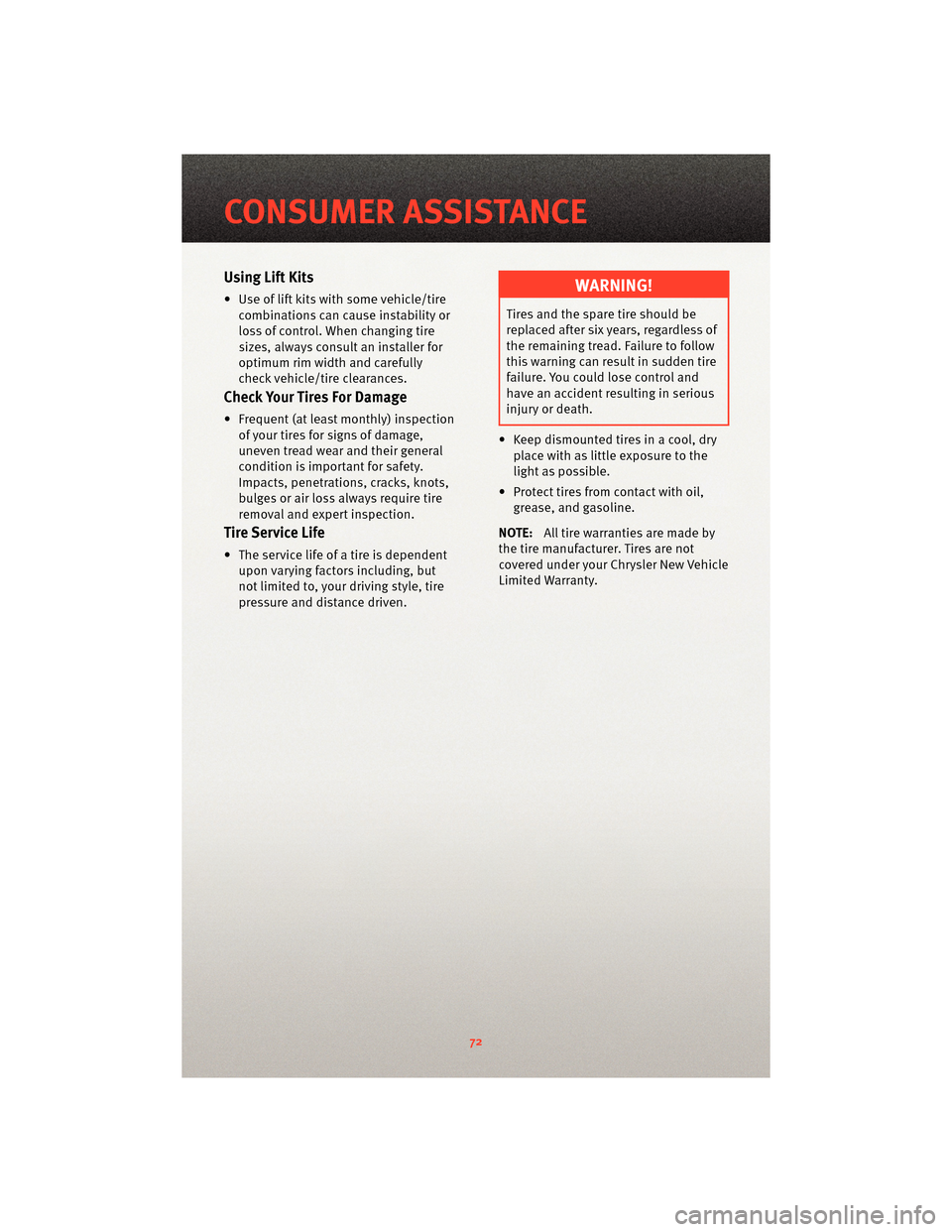oil DODGE VIPER 2010 ZB II / 2.G Owner's Manual
[x] Cancel search | Manufacturer: DODGE, Model Year: 2010, Model line: VIPER, Model: DODGE VIPER 2010 ZB II / 2.GPages: 80, PDF Size: 8.08 MB
Page 69 of 80

VEHICLE STORAGE
We recommend that you follow these guidelines for storing your vehicle for extended
periods.
• Fill the fuel tank. This will prevent water condensation inside the tank. If you plan to store your vehicle more than two months, add an anti-oxidant fuel stabilizer to the
fuel tank.
• Change the oil to remove any corrosive combustion related acids in the crankcase.
• Check that the radiator coolant level of protection is to at least -20°F (-29°C).
• Make sure that all tires are inflated to the optimum pressure.
• Wash and wax the vehicle to protect the finish.
• Store the vehicle in a dry, well-ventilated location.
• Move the wiper blades away from the windshield.
• Block the wheels. Do not apply the parking brake.
• Cut blocks of plywood about the same size of the tires. Cover each block with indoor/outdoor carpeting and place them between the tires and concrete. This will
prevent tire flat spotting.
• For long-term storage, remove the tires and put the vehicle up on blocks. Stack the tires on plywood and cover wit h a tarp to prevent flat spotting.
• If the vehicle will be subjected to freezin g temperatures, either remove the battery and
store it in a dry, well ventilated area or connect a trickle charger (1.5 Amp) with
automatic shutdown / overcharge protection to the battery. However, do not leave the
trickle charger hooked up to the battery without being plugged in to a 110 Volt AC
outlet, as this will result in further drain on the vehicle's battery. If the vehicle is not
going to be driven in the next three weeks, per form the battery recharge procedure in
the Service Manual. Then, either disconnect the b attery at the negative terminal or use
the “Battery Save Feature” to conserve battery power.
NOTE: Disconnecting the battery causes the en gine control system to lose memory of
some “learned” functions. After reconnecting the b attery, the engine may run rough until
the control module “relearns” these functions. Using the Battery Save Feature will
prevent the engine controller from loosing its memory.
CAUTION!
Use care when disconnecting the remote positive cable. It is connected to the battery
and can short out to any metal on the vehicle. Always tape or wrap the exposed cable
end to prevent electrical shorts.
• Check the battery every four to six weeks to ensure that the voltage is above 12.40 Volts. The voltage will drop more rapidly in hot temperatures. If battery voltage
drops below 12.40 Volts, follow the battery r echarge procedure in the Service Manual.
67
MAINTAINING YOUR VEHICLE
Page 74 of 80

Using Lift Kits
• Use of lift kits with some vehicle/tirecombinations can cause instability or
loss of control. When changing tire
sizes, always consult an installer for
optimum rim width and carefully
check vehicle/tire clearances.
Check Your Tires For Damage
• Frequent (at least monthly) inspectionof your tires for signs of damage,
uneven tread wear and their general
condition is important for safety.
Impacts, penetrations, cracks, knots,
bulges or air loss always require tire
removal and expert inspection.
Tire Service Life
• The service life of a tire is dependentupon varying factors including, but
not limited to, your driving style, tire
pressure and distance driven.
WARNING!
Tires and the spare tire should be
replaced after six ye ars, regardless of
the remaining tread. Failure to follow
this warning can result in sudden tire
failure. You could lose control and
have an accident resulting in serious
injury or death.
• Keep dismounted tires in a cool, dry place with as little exposure to the
light as possible.
• Protect tires from contact with oil, grease, and gasoline.
NOTE: All tire warranties are made by
the tire manufacturer. Tires are not
covered under your Chrysler New Vehicle
Limited Warranty.
CONSUMER ASSISTANCE
72